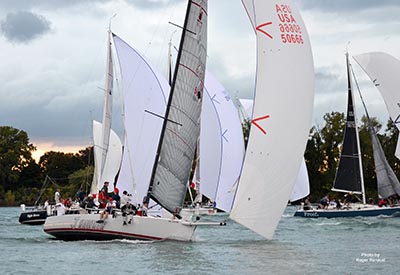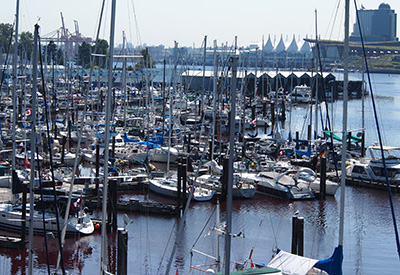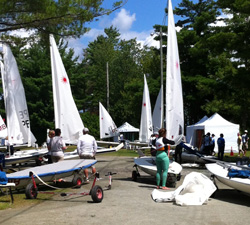125 years of History at Lunenburg Foundry
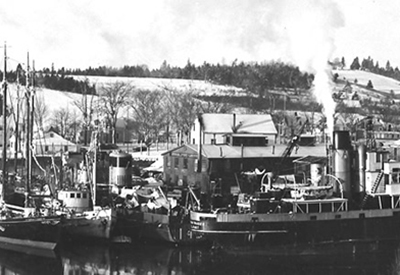
Dec 5, 2016
Lunenburg Foundry and Engineering Limited has been in business since 1891 surviving two world wars, the Great Depression and continuous change in the fishing and marine industry. Not only survived, but thrived. Here’s the history of the company.
Established since 1891, LIFE™ has serviced both marine and domestic industries in a variety of ways.
Our official company name is Lunenburg Foundry & Engineering Limited and we are ISO9001:2008 registered and is certified to CSA Standard W47.1. The modern company uses the acronym LIFE™, short for Lunenburg Industrial Foundry and Engineering as a registered trademark, which offers a wider range of services including Lunenburg Shipyard, Lunenburg Foundry and Manufacturing and our Professional Services. Our trademark LIFE™ represents the evolution that company has underwent, somewhat organically, over its century of service to encompass the present day company.
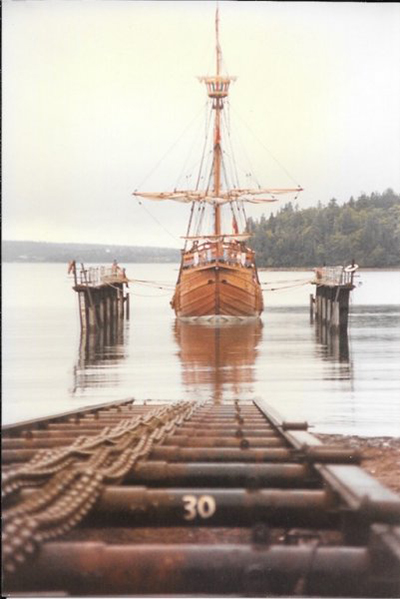 Our history is vast and diverse. Our conception was at the beginning of the height of the great grand banks schooners. The company played an integral part in the construction of many similar vessels to, and including, the Bluenose. LIFE™ has experience in the energy sector, having produced over a period of many decades a line of cast iron stoves, furnaces and related heating products, and provided HVAC & mechanical contracting services. The Foundry’s brand name products for a long time were the Atlantic Stoves for house and home. As a result, and throughout most of the 20th century, the company was widely known as a major manufacturer of commercial and residential heating equipment, including wood stoves and furnaces. Many well-known brands of wood stoves, such a Peacock, Cinderella and Lady Scotia, were produced at Lunenburg Foundry.
Our history is vast and diverse. Our conception was at the beginning of the height of the great grand banks schooners. The company played an integral part in the construction of many similar vessels to, and including, the Bluenose. LIFE™ has experience in the energy sector, having produced over a period of many decades a line of cast iron stoves, furnaces and related heating products, and provided HVAC & mechanical contracting services. The Foundry’s brand name products for a long time were the Atlantic Stoves for house and home. As a result, and throughout most of the 20th century, the company was widely known as a major manufacturer of commercial and residential heating equipment, including wood stoves and furnaces. Many well-known brands of wood stoves, such a Peacock, Cinderella and Lady Scotia, were produced at Lunenburg Foundry.
With the outbreak of WWII, the role of the Foundry adapted and was integral to the war effort. It seemingly overnight transformed itself into a naval ship servicing facility. At one point the Foundry employed over 500 people including many Norwegians from the nearby camp Norway who were part of the local war effort. After the war, the focus of the Foundry continued with ships in the fishing industry. However, the age of the wood stove was passing and homes and vessels were moving to more convenient ways of heating and cooking. The Foundry, with steady leadership, shifted gears and produced fewer stoves and focused more on engines. But again, this was not a brand new endeavor.
The Atlantic Engine, also known as a “Make and Break” engine, was designed and built at the Foundry beginning through the 20’s. The large Foundry buildings were a production line of these popular engines, which were once seen throughout the shores of the Atlantic coast. Furthermore, the company was an early pioneer in the development of a marine internal combustion engine. In 1921, Lunenburg Foundry was the first in Canada to install a diesel engine in a fishing schooner. The Foundry’s engine shop eventually advanced beyond the Atlantic engine. The engine shop adapted with the times and the Foundry became a dealer of Ford and Isuzu Marine engines and generators. Once committed, the Lunenburg Foundry distributed more engines than any other distributor in Canada for a number of years.
During the late 80’s the Foundry underwent modernization, which was well timed as the fishing industry started to grapple with major challenges. The old production lines were closed and the engine shop reduced its size. The last stoves were cast and assembled. Throughout it all, the Foundry continued to cast high quality castings for a variety of purposes. The company’s focus changed from production to servicing. A new era began and it was focused on adaptability, professional services and underwater gear.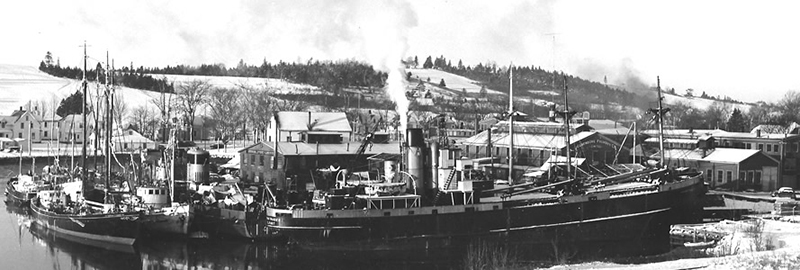
History of Lunenburg Shipyard
Lunenburg Shipyard, a leader in Atlantic Canada’s marine industry, operates a facility at the mouth of Lunenburg’s harbour. The history of the shipyard dates back to 1897 when it was established by local men and women of the town to service the grand banks schooners. The facility was named the Lunenburg Marine Railway, or LMR.
Adjacent to the shipyard was the well-known Smith and Rhuland Shipyard, which was responsible for constructing many of the grand banks schooners of the day including Bluenose and her successor, Bluenose II, HMCS Rose, Bounty, Teresa E. Connor and many other notable vessels. Those involved in LMR relied on the expertise of the community including the expertise brought by Smith and Rhuland and the Lunenburg Foundry Company.
The Lunenburg Foundry Company opened a welding and mechanics bay on the far side of the marine railways during WWII to perform naval refits and assisted LMR and Smith and Rhuland with Canada’s war efforts. After a time, the Lunenburg Foundry Company became the controller of LMR during the sixties and has operated the facility since then.
LMR and its surrounding land and facilities are known now as Lunenburg Shipyard and continues to be operated by the Lunenburg Industrial Foundry and Engineering.
www.lunenburgfoundry.comndry.com
Glen Cairns, CYOB Eastern Canada Correspondent, glencairns0@gmail.com




